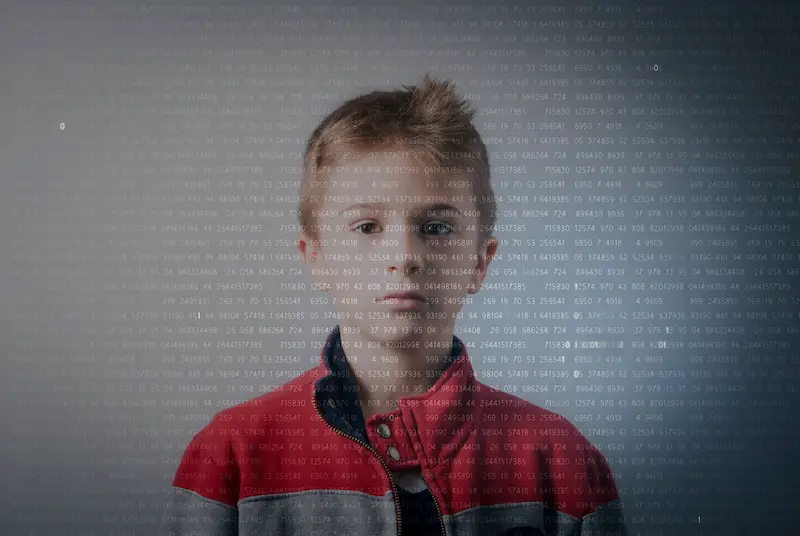Imagine a cool adventure where we get to learn about coding while also understanding how amazing kids on the autism spectrum are. You know, coding is like giving instructions to computers to make them do cool things, and it’s a really important skill. But guess what? Kids who see the world in a unique way – those on the autism spectrum – can be awesome at coding too! So, let’s dive into this guide that’s all about how to teach coding to these special kids.
Think of this guide as a big warm hug for parents, teachers, and anyone who cares about kids with different talents. We’re going to explore how to help these super cool kids learn coding, and it’s going to be a journey full of surprises and fun.
Table of contents
- Benefits of Teaching Coding to Children with ASD
- Challenges and Considerations in Teaching Coding to ASD Children
- Crafting an Inclusive Coding Curriculum for ASD Learners
- Strategies for Effective Coding Instruction
- Collaborative and Peer Learning for ASD Coders
- Tools and Resources for Teaching Coding to ASD Children
- Parental and Educator Involvement in ASD Coding Education
- Measuring Progress and Celebrating Achievements
- Addressing Challenges and Setbacks
- Inclusive School Environments and ASD Coding Programs
- Coding as a Lifelong Skill for ASD Individuals
- Conclusion
- Frequently Asked Questions (FAQ’S)
Benefits of Teaching Coding to Children with ASD
Teaching coding to children with ASD brings forth a plethora of advantages that extend beyond the realm of technology. These benefits include:
- Enhanced Cognitive Skills: Coding encourages logical thinking, problem-solving, and analytical skills and overall cognitive development in chidren
- Boosted Self-Esteem: Successful coding projects can boost self-confidence and a sense of accomplishment.
- Fostered Creativity: Coding provides a creative outlet to bring ideas to life in digital form.
- Improved Communication: Coding offers an alternative means of expression for children who may struggle with verbal communication. It helps for overall child development.
Challenges and Considerations in Teaching Coding to ASD Children
While coding offers numerous benefits, there are challenges to be mindful of when teaching children with ASD. Some considerations include:
- Sensory Sensitivities: Children with ASD may have sensitivities to lights, sounds, or textures that need to be accommodated.
- Communication Barriers: Clear instructions and visual aids are essential to overcome potential communication challenges.
- Attention Span: Tailoring lessons to accommodate attention spans helps keep learners engaged.
Unlock Your Coding Potential with CodeChamps: Your Gateway to Expert-Led Coding Classes and Mastery in the Digital Realm!

Crafting an Inclusive Coding Curriculum for ASD Learners
Designing an inclusive coding curriculum involves considering various learning styles and abilities. This can be achieved through:
- Visual Learning: Using visual aids, graphics, and diagrams to explain coding concepts.
- Hands-On Activities: Incorporating interactive activities to engage tactile learners.
- Flexible Pacing: Allowing learners to progress at their own pace to accommodate different learning speeds.
Strategies for Effective Coding Instruction
Effective coding instruction for children with ASD involves:
- Clear Instructions: Providing step-by-step instructions with visual cues.
- Chunking Information: Breaking down complex tasks into smaller, manageable steps.
- Immediate Feedback: Offering instant feedback to reinforce learning.
- Real-World Applications: Connecting coding concepts to real-world scenarios.
Collaborative and Peer Learning for ASD Coders
Collaborative learning enhances the coding experience for children with ASD through:
- Skill Sharing: Each learner contributes their strengths to group projects.
- Enhanced Social Skills: Collaborative projects encourage communication and teamwork.
- Problem-Solving: Collaborative projects promote collective problem-solving.
Case Studies: Successful Coding Education for Children with ASD
Real-world case studies highlight the transformative impact of coding education on children with ASD. These stories underscore the progress and achievements that can be attained through dedicated guidance and tailored strategies.
Tools and Resources for Teaching Coding to ASD Children
A range of tools and resources cater to different learning styles and abilities:
- Visual Programming Languages: Blockly, Scratch, and other visual languages simplify coding concepts.
- Coding Games: Interactive coding games for kids make learning engaging and fun.
- Educational Apps: Coding apps for kids offer coding practice and challenges.
- Online Communities: Coding communities provide support, tutorials, and shared projects.
Parental and Educator Involvement in ASD Coding Education
Involving parents and educators is crucial for holistic growth:
- Regular Communication: Parents and educators should maintain open lines of communication to track progress.
- Support System: Parents can extend coding education beyond the classroom by encouraging practice at home.Use online coding classes for kids
- Training for Educators: Educators can benefit from training that equips them with effective strategies for teaching children with ASD.
Measuring Progress and Celebrating Achievements
Monitoring progress and celebrating milestones in coding education involves:
- Milestone Tracking: Setting small goals and tracking incremental progress.
- Showcasing Work: Creating opportunities to display coding projects to peers and parents.
- Certificates and Rewards: Recognizing achievements with certificates, badges, or small rewards.

Addressing Challenges and Setbacks
Facing setbacks is a natural part of the learning process:
- Positive Reinforcement: Encouraging persistence and effort in the face of challenges.
- Adaptive Approaches: Adjusting strategies if a particular approach isn’t effective.
- Embracing Failure: Viewing failures as opportunities to learn and grow.
Inclusive School Environments and ASD Coding Programs
Promoting inclusive coding programs within schools involves:
- Advocacy: Encouraging schools to adopt inclusive coding programs.
- Teacher Training: Ensuring educators are equipped to support learners with ASD.
- Accessible Spaces: Creating physical and digital environments that accommodate diverse needs.
Coding as a Lifelong Skill for ASD Individuals
Recognizing coding as a lifelong skill entails:
- Career Opportunities: Coding skills open doors to diverse career paths.
- Personal Growth: Coding fosters problem-solving and critical thinking skills.
- Independence: Coding empowers individuals with ASD to create and innovate.
Conclusion
And there you have it, our little adventure into teaching coding to kids on the autism spectrum comes to an end. But guess what? It’s really just the beginning of something amazing. We’ve learned that with a little bit of understanding and a lot of kindness, we can help these fantastic kids shine.
Remember, it’s like planting a seed of knowledge and watching it grow into a big, strong tree. By giving these kids a chance to learn and express themselves, we’re helping them become confident and awesome individuals.
So, as we go forward, let’s keep this adventure in our hearts. Let’s create a world where every kid’s special skills are celebrated, and where learning is a super fun journey for everyone. After all, with a little love and a sprinkle of creativity, anything is possible!
Join the revolution in education with Brightchamps. Our courses in robotics, coding, and financial literacy empower kids to become confident and capable learners.
Frequently Asked Questions (FAQ’S)
A1. Teaching coding to children on the autism spectrum can offer several benefits, including:
Enhanced Problem-Solving Skills: Coding encourages logical thinking and problem-solving, which can be particularly beneficial for individuals with ASD who often excel in structured tasks.
Improved Communication and Social Skills: Collaborative coding projects can help children with ASD develop communication and teamwork skills, promoting social interaction.
Increased Confidence: Successfully completing coding projects can boost self-esteem and confidence in children with ASD.
Stimulating Creativity: Coding allows for creative expression, enabling children to explore their imagination.
Career Opportunities: Coding skills are highly valued in the job market, providing ASD individuals with potential long-term career opportunities.
A2. Educators can adapt coding curricula for diverse learners on the autism spectrum by:
Personalized Instruction: Tailoring instruction to each child’s learning style and pace.
Visual Supports: Utilizing visual aids, diagrams, and flowcharts to enhance understanding.
Sensory Considerations: Creating a sensory-friendly environment and providing sensory breaks when necessary.
Structured Routines: Establishing clear routines and expectations to reduce anxiety.
Social Learning Opportunities: Incorporating group activities and peer collaboration to improve social skills.
A3. Yes, there are tools and platforms designed for ASD coding education, including:
Scratch: Scratch offers a visually appealing and user-friendly interface suitable for beginners, including those with ASD.
Tynker: Tynker provides coding lessons and activities specifically designed for kids, with some options for autism-specific adaptations.
Robotics Kits: Physical coding with robotics kits, like LEGO Mindstorms, can engage ASD learners through hands-on activities.
Autism-specific Software: Some software applications are designed explicitly for children with autism, combining coding with tailored sensory experiences.
A4. Parents can support their children’s coding learning journey by:
Exploring Together: Learning alongside their child to provide encouragement and bonding.
Providing Resources: Access to coding books, online courses, and educational games.
Creating a Learning Space: Setting up a quiet, organized space for coding activities.
Fostering Independence: Allowing children to solve coding challenges on their own while offering guidance when needed.
Celebrating Achievements: Recognizing and celebrating milestones and completed projects.
A5. Coding skills can offer various long-term opportunities for individuals on the autism spectrum, including:
Employment: Coding is a high-demand skill, providing potential career opportunities in software development, web design, data analysis, and more.
Entrepreneurship: Coding skills can be a foundation for starting tech-related businesses or freelance work.
Innovation: The problem-solving and creative thinking skills acquired through coding can lead to innovative solutions and projects.
Financial Independence: Successful careers in coding can provide financial independence and stability.
Social Inclusion: Engaging in coding communities and projects can enhance social inclusion and a sense of belonging.


 We are an army of educators and passionate learners from BrightChamps family, committed to providing free learning resources to kids, parents & students.
We are an army of educators and passionate learners from BrightChamps family, committed to providing free learning resources to kids, parents & students.








